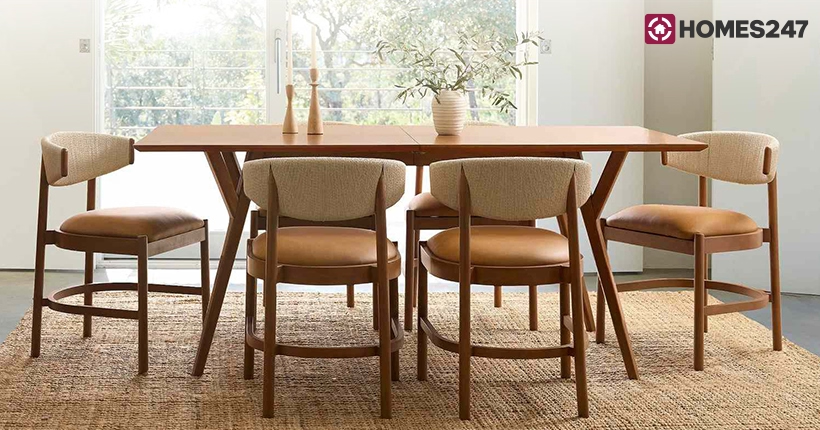Copyright © 2018 VSNAP Technology Solutions Pvt Ltd | All Rights Reserved.
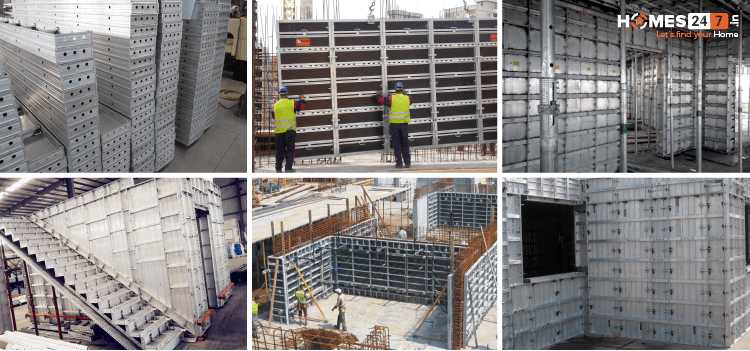
Trending Now
"Building Tomorrow, Today: Mivan Construction Innovation!"
Let's delve into a rapid exploration of Mivan Construction Technology,
Construction Technology has now evolved beyond comparison. From the age of building a mere shelter to the advent of skyscrapers, the tenets of construction have evolved over time, balancing safety, durability, and aesthetics, continually advancing with each passing era. Right from the early '90s, Mivan Construction Technology has revolutionized the realm of real estate with higher structural stability and faster completion time.
With the vision of facilitating housing for all, the government aims to complete one of the most desired projects in India through the affordable housing in India scheme. With the help of Mivan technology, the scheme can be implemented at a faster rate.
This can also pace the real estate industry at a faster rate to cater to the requirements of the age. Nevertheless, there is a lack of awareness regarding Mivan construction technology, so let's illuminate this subject first.
Evolution in Construction Materials & Methods:
In the olden days, the housing construction methods were simple and only primitive materials were used. Mud, Stone boulders, Sand, Twigs, and Wood were part of the construction materials.
What is Formwork?
Formwork is a critical component of the construction process, ensuring that concrete or other materials are poured and shaped accurately to meet the design specifications of a structure. The mold is usually made of wood in the traditional construction methods.
Mivan Construction Technology
As the traditional molds are often made of wood. These wooden formwork systems often get deformed over time, i.e. they twist or bend, so we cannot expect quality infrastructure through such formworks. Apart from timber, other formworks are also built using plastic, fabric, fiber, steel, and aluminum.
It emerged in response to the limitations identified in traditional timber formwork techniques. It was during the 1990s that Mivan Company Limited took the lead in pioneering the use of aluminum formwork in construction.
Pre-fabricated panels require minimum onsite assembly, considerably accelerating construction pace as compared to conventional methods. This can shorten project timelines and decrease hard work fees.
Tight joints and strong panel connections make a contribution to stronger structural integrity and seismic resistance as compared to brick and mortar construction.
Installation requires educated personnel acquainted dealing with and assembling prefabricated components, which might not be conveniently available in all regions.
Though a relatively new construction technology in India, Mivan has been a crucial part of the projects in many countries in the Far East as well as the Persian Gulf.
As mentioned earlier aluminum alloy is used to build the Mivan System. It is known for its rapid construction pace and reduce the need for additional plastering. The main parts of this system include the beam, deck, wall and other components. Any construction involves shuttering, centering, and scaffolding. This process will be on a continuous scale.
Mivan shuttering molds are fabricated to construct vertical structures. These molds can even be used for circular columns, footings and retaining walls. Centering is also a momentary formwork that is built to support the horizontal structures like the beams & slabs.
What is Shuttering?
Shuttering is simply forming the mold with wood whereas formwork is the umbrella term that incorporates forming the mold with other material.
Scaffolding is the platform created to enable the workers to accomplish their construction tasks. These are temporary structures built against the original construction. There are around 7 scaffolding methods, like a single, double, cantilever, suspended, trestle, steel, and patented methods.
Frequently Asked Questions(FAQ)
As mivan technology is relatively new to India, there are a lot of factors and elements of the same on which we are still in dark. So allow us to shed light on a few frequently asked questions on the method:
How fast is Mivan compared to traditional construction methods?
What are the Components of Mivan Formwork?
What is the Building Process of Aluminum Formwork Technology?
Need for Mivan Construction Technology?
What are the Major Features of Mivan construction technology?
Application of Formwork?
How fast is Mivan compared to traditional construction methods?
The traditional construction methods will take up to a 10-day cycle to complete a floor whereas Mivan takes only up to 4 days.
What are the Components of Mivan Formwork?
Let’s move further to know the parts of the formwork which form the integral portions of Mivan Construction Technology. Below Image Describes Components of Mivan Fromwork.
Wall: Wall Panel,Rocker, Kicker,Stub pin
Beam: Beam Side Panel,Prop head for Soffit Beam, Beam Soffit panel, Beam Soffit Bulkhead
Deck: Deck panel, Deck prop, Prop length, Deck Mid-beam, Soffit length, Deck beam bar
Others: Internal & External Soffit corner, Internal & External corner
What is the Building Process of Aluminum Formwork Technology?
Now that we've familiarized ourselves with the primary components of this formwork system, let's explore how construction activities can be effectively executed using it.
The set-up of Formwork is used in the following stages.
1. Pre-Concrete:
The Formwork is designed & built on the construction site by the workers based on the requirements such as beams, walls, stairways, pillars, etc.
2. During Concrete:
Here, monitoring of the formwork is essential as concrete will be poured into the set-up molds. The pins or wedges may dislocate during this process. The workers should carefully check for the correctness of braces, wedges or pins and also, see that there is no excess concrete added into the molds.
3. Post-Concrete:
The formwork set-up has to be cautiously removed after the allocated period for the setting of the concrete. The components should be perfectly cleaned as it has to be re-used again.
Need for Mivan Construction Technology
Any innovation has a valid reason for its emergence. Likewise, the Real Estate sector is also subjected to gradual changes to meet the requirements.
Now, the demand for housing and commercial spaces is at an increased rate. The lucrative jobs along with home loan facilities have created the affordability to own a house for the middle-class group.
It produces high-quality, smooth, and well-finished concrete surfaces and can be adapted for various types of structures. The cost savings in terms of labor and time often make it a cost-effective choice.
So, owning a property is no longer a big challenge. But these factors have increased real estate activities.
Developers are also finding ways to accomplish the best service. As a result, the construction activities are progressing on a larger scale or mass production is in vogue. In such cases, the primitive or the traditional methods of construction has to be relooked. Hence, Mivan construction technology is adopted by major developers to combat high demands.
Another key factor for adopting is the cost factor for Mivan shuttering components, labour & material cost better than the traditional or conventional methods.
What are the Major Features of Mivan construction technology?
Simple: The formwork systems or the assemblies are simple with only horizontal, vertical or circular moulds and few additional accessories.
Fast: The construction work can be accomplished at a faster rate since the moulds are ready and need not be constructed each time.Wear and tear of the formwork is negligible when compared to timber formwork.
Adaptable: Since the formwork is a one-time set-up, it can be transported to any worksite with ease. It just has to be fixed to the construction place and start with the concrete work immediately.
Cost-Effective: Due to one-time investment on the primary resource (high quality aluminium alloy), durability, sustainability and also recyclable features do not add much weightage on the costing.
Application of Formwork
Mivan Formwork can be applied to both residential and commercial ventures. The residential developments include affordable housing projects, high rise buildings, townhouses, single or multi-floor structures. Apart from these, commercial spaces include high-rise offices, hotels, storeyed parking floors.
Comparison between Mivan Formwork & Traditional Formwork systems :
It is important to know what are the differences between conventional and Mivan Construction Technology.
|
Parameters |
Formwork |
|
|
Traditional |
Mivan |
|
|
Construction – Make & Model of the Formwork |
Wooden logs are used to build the Formwork & a tedious job. Also, moulds may get damaged during the dismantling process. |
As aluminium alloy is used to fabricate the moulds, it is easy to build. Also, dismantling is an easy process and subjected to less damage. |
|
Robustness |
These formworks cannot last long, limited usage only. |
The systems are rigid and can be used even over 250+ times. |
|
Construction Work |
The construction rate is slow, new formwork systems should be built after fewer usages. The time lag in building and executing the construction work prevails until the completion of the project. |
Fast-paced construction work, there is no need to build the systems frequently. The idle time is minimal in the construction process. |
|
Seismic Resistance |
Lower resistance |
Higher resistance |
|
Quality Infrastructure |
Perfect plastering is required to remove the rough texture. |
Extensive plastering is not required in this case. |
|
Cost |
Not economical |
Cost effective |
|
Reusability |
Low systems get damaged during the construction process. |
High as the formwork is made up of high strength aluminium alloy, subjected to less damage during the process. |
|
Carbon Emissions |
Once the make & model of the structures are distorted, they are burnt. Hence it leads to carbon emissions. |
Subjected to low carbon emissions and the Mivan Formwork systems can be recycled, |
Advantages and Disadvantages of MIVAN Construction Technology
|
Advantages |
Disadvantages |
|
Lesser Time & Labor Force Required |
Higher Costs |
|
Smooth & Premium Finish |
Finishing Lines will be visible |
|
Highly Durable & Earthquake Resistant |
No room for alterations or modifications |
|
Low Maintenance |
Prone to visible cracks which can be avoided if precautions are used |
|
Higher Carpet Area |
Requires uniform planning to reduce costs and alterations. |
|
Panels can be reused upto 250 times |
|
Benefits of MIVAN Technology?
This technology compared to the traditional ones will take very less time and labor force to complete the construction. The buildings built with mivan is very durable and seismic resistant ( earthquake resistant) compared to the ones based on other methods. Mivan also gives off a smooth finish for the structures. As aluminium alloy doesn't rot nor rust away it can be used multiple times. The scrap value will also be higher. Mivan panels can be adapted to numerous architectural designs, together with curved walls and tricky shapes.
Demerits of Mivan Technology?
The major limitation of Mivan is that even though it provides a smoother finish, the lines will often be visible because of the minuscule components used in construction. The cost will also be comparatively high. There will also be no scope of remodifications to the structure as it is built to be an inflexible monolith in RCC or Reinforced Cement Concrete. The production of aluminum, which is a key component of Mivan formwork, can have environmental impacts. Standardized panel sizes and connections may restrict the implementation of complicated architectural designs, requiring careful making plans and ability diversifications. Mivan construction may not be suitable for all site conditions, such as areas with challenging terrain, limited access, or extreme weather conditions.There can also be shrinkage related cracks which can be solved by using fly ash or sealing strips.
FAQs of Mivan Technology
1) What is Shuttering?
Shuttering is simply forming the mold with wood whereas formwork is the umbrella term that incorporates forming the mold with other materials.
2) How fast is mivan compared to traditional construction methods?
The traditional construction methods will take up to a 10-day cycle to complete a floor whereas mivan takes only up to 4 days.
In any industry, it is difficult to adapt to new methods. However, if the change is for the betterment and yields the best results it is always wise to choose the new path by accepting it. Likewise, the real estate sector is wholeheartedly adopting Mivan construction technology, given its proven superiority over traditional formwork methods. The superior features like reusability, fast build cycles, strength & stability make Mivan Formwork popular among mass constructions.
Nevertheless, it is crucial to assess its constraints carefully and applicability in accordance with the precise needs of each project. As the construction sector transforms, Mivan technology stands as a testament to the industry's dedication to progress and enhancement, offering solutions that align with the evolving requirements of contemporary construction, all while relentlessly pursuing excellence in safety, craftsmanship, and operational effectiveness.
Similar Blogs
Trending Blogs

Categories
Latest Blogs
By Admin
How Indians Can Invest in Real Estate Abroad: Rules, Risks, &Opportunities
By Dan E Kuriakose
11, October 2025
Other Trending Now Blogs
REALESTATE IN INDIA
Property In Bangalore
Property In Hyderabad
Property In Chennai
Property In Pune
Property In Kochi
Types of Shankh for Home Decor & Vastu
Unlock Positive Energy with Proper Mirror Placement in Vastu
Combining Vastu and Feng Shui for a Healthier, Happier Home
How Feng Shui and Vastu Can Transform the Energy of Your Kitchen
Unlocking the Secrets of Your Home’s Energy with Vastu and Feng Shui
TV Placement Vastu: How to Improve Your Home’s Energy Flow
Vastu Shastra for Bedroom: Colors, Furniture, and More
Is Your Home Missing Positive Energy? Vastu for Home Mistakes
How to Remove Negative Energy from your Home
Vastu Shastra for Balcony Design
Stunning Vastu Colours for Living Room
Why Having An Aquarium Is Lucky For Your Home
How To Fix Pooja Room Vastu dosha?
Benefits of Using a Lion Door Knocker
Benefits and significance of Shami Tree
Boost Your Life with Vastu Tips for Keeping Kamdhenu Cow
Tips to clear Vastu Doshas from your Home
Vastu Helix: Solutions for Vastu Defects and Energy Harmony
Vastu for Apartments- Tips and Ideas
10 Bad Luck Plants to Avoid in Home
10 Main Door Colours as per Vastu
Enhance Your Home with the Elegance of Arrowhead Plants
Best Vastu Direction for Study Table - Boost Focus & Concentration
Enhance Your Wellbeing with a Vastu Chart
Vastu Chakra for Home Transform Your Space & Boost Vibes
South West Facing House Vastu Secrets and More to Know
Unlock Prosperity: The secret of 7 Horse Painting
15 Vastu Shastra's Principle in Agricultural Land
Elephant Statues - Vastu Wisdom for Your Home
Lucky Plants for Office Desk - 15 Best Office Desk Plants
Griha Pravesh 2024 - Griha Pravesh Pooja Muhurats
14 Things Not To Keep At Home - Vastu Tips for Home
All About the Benefits of Parijat Tree
Best Lucky House Names as per Vastu for 2024
Vastu Pyramid - Embracing Positive Changes at Home
Best Mandir Direction in Your Home -Vastu Tips
Feng Shui Colours to Create a Harmonious and Balanced Home
Vastu Paintings to Improve Positivity in Your Home
Laughing Buddha - Bringing Joy Home
Get Rid of Vastu Doshas using Vastu Yantra
Vastu Influencing Relationships
Does Hanging Horse Shoe in Home Bring Good luck as per Vastu?
Vastu Plants According to Directions
Vastu Shastra Vs Feng Shui: An Overview
Vastu Shastra Tips for North Facing Homes
Channel Postivity & Greenery through Vastu Gardens
The Essential Guide for Vastu Paintings in your Home
Simple Dining Room Vastu Hacks
All about Vastu Colours for Home
Main door vastu for flats - Dos and Don’ts
How much do you know about Vastu for Flats?
How Staircase Vastu Helps to Bring Positivity to Home ?
Comprehensive List of Griha Pravesh Muhurats and Dates 2021
The Best Vastu Items For Home :7 Lucky Charms For Home
5 Best Vastu Trees for Home: Go Green and Grow Positive!
5 Vastu Tips For Mirror Position in Home
Top 9 Vastu Tips for Home to bring in Positivity and Good Luck
7 Vastu Tips for Kitchen in your Home: Do's and Dont's
10 Best Ways to Adapt Vastu for Living Room to Bring Positivity.
Best Real Estate CRM Software in India for 2025-2026
Top 10 Best CRM for Real Estate in India
Need for Social Media for Small Businesses
What’s the Difference Between a Free and Paid CRM in India?
GST Rate Cuts 2025 List of Items and New Rates
Upcoming Infra Developments Near Attibele, Bangalore
Meet the Big 5: Bengaluru’s New Civic Corporations Explained
What Makes Retrofitting a Smart Upgrade in Any Market?
Performance Marketing vs Traditional Digital for Builders 2025-26
Why Builders Need More Than Just a Website in 2025 -2026?
Hidden AI Innovations Shaping Humanity’s Future | 2025 Insights
Prefab Housing: The Smart, Stylish Solution for Modern Living
Buying a Second Home in Bangalore in 2025 – What You Need to Know
How to Perform Keyword Gap Analysis for SEO
International Day of Happiness 2024 United Nations
10 Gifts India Gave to the World
Temples Near Ram Mandhir in Ayodhya
Divine Comfort: Accomodation Near Ayodhya Ram Mandir
How to reach Ayodhya Ram Mandir?
Ram Mandhir 2024 - New Darshan, Aarti Timings & More
Hidden Gems in India: Why Maldives, When You Have Lakshadweep?
Bangalore Real Estate 2024: The Surge & Outlook
Ayodhya Ram Mandir & Infrastructural Development
Top 12 Temples to Visit in Tirupati
20 Best Architects in the World
Metaverse - The Rise of Virtual Realty?
Bhulekh Bihar - How to Check Bihar Land Record Online ?
All about Patta Chitta - Tamil Nadu Land Records Online
A Khata and B Khata Difference - All About BBMP Certificates
6 Types of Sand used in Construction
Types of Bonsai Trees for Home
10 Best Vastu Tips for Wall Clock at Home for Lucky Times Ahead!
Best Vastu Fishes for Home - Aquarium Direction and its Benefits
15 Proven Vastu Plants for Home [Comprehensive List]
10 Different types of Wood in India that can be used for Furniture
List of Luxury Apartments in Bangalore 2024
Modern vs Traditional Interior Design Styles: A Complete Guide
Upgrade Your Dining Room Like a Pro - Without the Price Tag
The Best Pooja Room Interior Design Ideas for a Peaceful Home
Why Your Interior Design Isn’t Working: Common Mistakes Explained
Wall Shelf Design Ideas to Add Style and Maximize Your Space
Bold Kitchen Color Combos That Will Transform Your Space
Unique Colour Combinations to Refresh & Brighten Your Living Room
Wooden Carved Main Doors: Nostalgia, Design, and Timeless Charm
Trending Wooden Door Designs for Modern Indian Homes in 2025
The Art of Floor Molding Baseboard: Small Details, Big Impact
Top Color Blocking Wall Ideas to Make Your Space Truly Pop
Top Home Decor Trends in India: A Simple Guide to Style 2025
Improve Interior Comfort Using Smart & Effective Acoustic Design
Style Your Console Table: Easy and Simple Decorating Tips
Raw Materials, Refined Style: The Industrial Interior Story
How to Turn Your Hallway into a Welcoming Statement Space?
Top Color Trends for Modern Interiors to Inspire Living in 2025
The Ultimate Guide to Popular Interior Design Themes
Trending Now: Top 7 Window Curtains Styles to Refresh Your Home
Open Shelving in Kitchens: Not Just Trendy, But Transformative
The Color Duo That’s Transforming Minimalist Living Rooms
Top 10 Interior Designers Transforming Bangalore Homes in 2025
Transform Your Space by Fixing These 4 Rug Mistakes
The Timeless Appeal of Classical Interior Style in Every Room
Filling the Silence: My Perspective on Negative Space
Open Kitchen Living Room Ideas Combo: The One Must-Know Rule
Interior Trends That Aren’t Just for Instagram - Discover Them
How Can a Bay Window Quietly Transform Your Entire Home?
Pros and Cons of Vaulted Ceilings: What You Need to Know
Mix and Match: Boho Interior Design for Every Room
How to Use Pastel Colors Interior Decor to Brighten Your Space?
Eclectic Interior Design: A Style as Unique as You Are
Why Space Planning Is the Secret Sauce of Interior Design
Epoxy Flooring Designs: A Perfect Blend of Beauty and Durability
Highlighter Tiles: Transform Any Room with Color and Style
Bring Nature Indoors: Wall Planters That Wow
Carpet Cleaning: Do's and Don'ts You Need to Know
Parquet Flooring: The Timeless Trend That’s Back in Style
Track Lighting: Shine a Light on Style With Ease
How to Spot and Remove Black Molds in Your Home?
French Windows: The Perfect Blend of Functionality and Elegance
The Ultimate Wallpaper Removal Guide You Need to Read!
Why Terrazzo Flooring Is the Best Choice for Durability and Style?
From Clutter to Clean: How a Folding Wall Table Transforms Space
Why Are Homeowners Choosing Decolam Sheets Over Costly Options?
Minimalism vs. Maximalism: Finding the Perfect Design Balance in 2025
Color Palettes for 2025: Exploring Earthy Tones and Digital Brilliance
Stylish and Functional Wooden Door Designs for Every Home
Creating a Work-From-Home Haven: Design Ideas for 2025 in India
Brobdingnagian Interior Designs for Your Home
What Makes Interior Designers in Chennai Stand Out?
Top 5 Interior Designers in Hyderabad
Creating Your Dream Gaming Room: Top Wallpaper Designs
Tips for Choosing the Right Furniture
Comprehensive Guide on Top 10 Interior Designers in Kochi
10 Plants you can Easily Grow in a Bottle
Transform Your Space: Affordable PVC Wall Panel Ideas
Creative Yellow Colour Wall Paint Ideas for Your Home
10 Indoor Plants that Live Over 50 Years
What Makes Rosewood Furniture the Best Choice for Your Home?
Creative Wall Painting Ideas to Elevate Your Home Decor
Quiet luxury Interiors for Home
Stunning Exterior Wall Tile Designs for Every Home Style
Exploring the Different Types of Sliding Doors
French Interior Design Ideas For a Sophisticated Look
Biophilic Design: Transform Your Space with Nature
Achieve Zen Living: Mastering Japandi Decor Interior Design
Modern Wardrobe Designs for Every Style in 2024
7 Stylish Dressing Table Designs for Every Bedroom 2024
Stunning Wall Art Ideas for Every Room (2024)
Modern Wall Texture Designs for an Elegant Look
Latest Pooja Room Designs for Home 2024
Indian Traditional Textile Ideas for Home Decor
Tri Colour Wall Combination For Your Home
Partition Designs for Your Home that Double Your Space
Vacuum Cleaner for Home: Easy Guide
Top 10 Marble Texture Paint Designs for Interior Walls
The top stencil designs for Interior Wall Painting
Declutter the Kitchen: Easy Steps to Transform Your Kitchen
Spruce Up Your Space: Living Room Do's and Don'ts
Craft Your Study Room Simple Tips for a Neat & Productive Space
The Top 6 Wabi-Sabi Interior Design Ideas For Your Home
Sofa Cover Design Trends 2024: Find the Right Look For Your Space
Trendy Bedroom Sofa Designs - Best Sofa For Bedroom
Easy & Impactful Accent Wall Ideas
Athangudi Tiles - A Guide to History
Designer Carpets for Living Room - A Complete Guide
Why Marine Plywood is The Ultimate Choice?
White Paint for Walls - All you need to Know
Top 15 Interior Designers in Bangalore 2024
10 Best Main hall double door designs for Home
14 POP Designs for Bedroom Ceiling for An Aesthetic Appeal
Reasons to Love Matte Finish Tiles
Transform Walls with Stunning Wood Wall Tiles
15 Aesthetic & Modern Bed Designs for your Bedroom
Small Space, Big Style: Creative Small Bedroom Design Ideas
Different Kitchen Chimney Types and its Uses
Captivating Bookshelf Design Ideas to Elevate Your Space
Customize Your Kitchen Countertop Designs and Styles
15 Best Wooden Chair Design Ideas for Home
Space-Saving Comfort: Unfold Convenience with Folding Beds
Aesthetic Wooden Dining Table Designs for Home
Inspiring Two-tone Interior Wall Colour Combinations for Indian Home
Illuminate Your Space: Wall Light Designs For Stylish Decor
Best Showcase Designs For Home
Iron Stairs Design: Elevate Your Space with Elegance
Modern Duplex House Designs for your Home
All About Money Plants for Home - Types, Benefits and Vastu
Aesthetic Colour Combinations for your Bedroom
Stylish TV Unit Designs for Your Home
The Ultimate Guide to Choosing Vanity Lights for Your Space
Black Granite Kitchen Countertops Design
Houseplants for house with Fresh Air
Chic Home Decor a Stylish Theme
Small Bedroom Decorating Ideas on a Budget
Top 10 Indoor Water Plants For Your Home
Top Interior Design Trends to Watch in 2023
Best Interior Designers in the World
Top Indian Interior Designers and Firms
Simple Ways to Spice Up your Guest Room
All About Clerestory Windows at Home
Open Kitchen Vs Traditional Kitchen
Amazing Rental Home Decor & Design Ideas
Top 10 Types of Granite for your Home: Flooring and Countertop
7 Bedroom Decoration Ideas on a Pocket Friendly Budget
14 Simple & Easy Showpiece Ideas for your Living Room
Benefits of Snake Plant in your Home and Office
Top Patio Designs for your Home
Top 25 Air Purifying Indoor Plants for your Home
Picture Perfect Staircase Designs
How to make your Apartment Eco Friendly?
Wallpaper Vs Paint - Time to Choose
Creative Methods to lighting house naturally and beautifully
Differences between Engineered Wood and Solid Wood
Top 12 Bedroom Decor Ideas for your Home
18 Best Ornamental Plants for your Home Gardens
Top 7 Dining Room Ideas and Designs for Home
Advantages of Types of Home Fragrances
8 Hacks for a Spacious Home and Bigger Home Space
Tips to Make Your Home Disabled Friendly
Marble Flooring - Types of Marble Flooring for Your Home
Latest Curtain Designs for Living Room
All about Wooden Flooring for your home
5 Easy Tips for Pest Control for Home
9 Different Types of Floor Tiles: Classy Tile Designs
Ideas for Studio Apartment Interior Designs
Stylish Easy Bathroom Renovation Hacks For Home
Simple Tips to Improve Ventilation for Home
Home Bar Ideas - 5 Simple and Brilliant DIY Home Bar Tips
Types of Windows - 17 Evergreen Window Designs for your Home!
Tips for Creating A Meditation Room
Modern Kitchen Designs - 8 Best Modern Modular Kitchen Ideas
Home theatre designs: Create your own Movie Room at Home
Types of False Ceilings-House false ceilings
Kids Room Designs- Simple Kids Room Decoration Ideas for Home
Home Library Designs for your Reading Space!
Popular Types of Indoor Lighting
Various Types of Foldable Furniture Designs
17 Low Light Indoor Plants for Home - An Amazing Garden Collection!
10 Modern Minimalist Interior Design Tips for Home
Quick and Smart Storage Hacks for Compact House Designs
How Modern Home Amenities Are Changing What Buyers Really Want?
House Buying in India: 30s vs. 50s – What’s the Difference?
Walk Up Apartments: Affordable Urban Living Without an Elevator
Picture Perfect Homes: Why Real Estate Photography Matters
Vastu for Gaumukhi & Shermukhi Plots
What Documents Are Required for Home Loan?
How Rising Mortgage Rates Impact First-Time Home Buyers' Experience
Unveiling the Psychology of Online Property Searches: Key Factors That Drive Clicks
Why 2025 Home buyers Are Flocking to Ready-To-Move Homes
Top 10 Luxury Villas in Bangalore with Pool Access for Modern Living
Tier-2 Cities: The Best Places to Buy Property in India
Villa vs Apartment: Space vs Convenience. Which suits your needs?
Why Row Houses Are Taking Over the Urban Landscape?
All You Need to Know About Cross Border Real Estate Investments
10 House Types in India You Should Know
Your Ultimate Guide to Making a Smart Purchase in 2025
Understanding the Home Inspection Process in 2025
Furnished Vs Unfurnished Homes: A Complete Guide
Explore the Different Prime Locations in India that You Never Knew.
What is a Resale Property- Steps to Follow While Buying a Resale Flat
How to Choose Between a New Home and an Old Home
The Ultimate Guide to the Top 10 Most Expensive Apartments in Bangalore
Affordable Housing Schemes in Bangalore
What is Margin Money in Property Purchase?
Established Builders vs. Small-Scale Builders: Who is Better?
Your Guide to Senior Living: Top Solutions for Every Stage of Life
Tips for Finding the Perfect 1 BHK Flat in HSR Layout
Top 10 Localities to Buy a House in North Bangalore
KWIN City: Your Gateway to Modern Living in Bangalore
Resale vs New Construction: The Ultimate 2024 Buyer’s Guide
Understanding E-Khata: The Future of Property in Bengaluru
Discover KIADB Aerospace Park, a Hidden Gem for Home Buyers
Top 5 Localities to Buy a House in Bangalore and Latest Market Trends
When to Buy a Home in India - Essential Tips
Stand Alone Building Vs Gated Community
Are You Ready to Buy a Home in India? A Complete Guide
Top Residential Areas Near Whitefield 2024
Impact of Hosur International Airport on Bangalore Real Estate
Why Rayasandra is the Next Big Opportunity in South East Real Estate?
Why Haralur Road in Bangalore is Ideal for Property Investment?
Millennial Home Buying Trends 2025
Floor Space Index(FSI) - A Comprehensive Guide for Homebuyers
Tripartite Agreements | A Three-Way to Get Things Done
Pros and Cons of Investing in a 2BHK Flat in Bangalore
The Ultimate Guide to Financial Planning for Home Purchase
Kerala Registration Department - E-Rekha Online Services
Simplifying NOC in Bangalore Real Estate Finding Dream Home
Rules and Regulations for NRI Property Buying in India
Top 8 Plot Investment Destination in Bengaluru
Best ways for Home Buyers to Negotiate with Real Estate Developers
What is the difference between a Villa and an Independent House?
Construction Linked Payment Plan: To Aid Home Buyers
Under Construction Vs Ready to Move In Properties
Pros & Cons of a Buying a Resale Home
What are New Launch Projects? Why Buy a New Launch Unit?
Shifting versus Renovating your Home
How to check the construction quality of your new home?
How to Check out Builders Reputation and Credibility?
How to get your home loan approved real easy?
Built up area, Super built up area & Carpet area Explained!
How this Pandemic can be a Doorway to your New Home.
NRI tips to Buy Property in India
A Guide of Different Types of Houses in India
All About Buying Property Online
Top Advantages and Disadvantages of Buying a Second Home
Bangalore's Best Flats under 30 Lakhs
Get the Perfect Dream Homes in Old Madras Road!
Find the Home of your Dreams at Whitefield!
Why Choose a Home in Hennur Road?
3 Reasons For Finding A Home in Sarjapur Road!
Ultra Luxury Apartments in Bangalore-Next Level Living Spaces
Under Construction Projects: All You Need To Know
Old Age Homes in India- Top Senior Citizen Housing
10 Best Places to Live in Bangalore: Residential Areas
10 Best Apartments near Manyata Tech Park Bangalore
15 Best Tech Parks in Bangalore: A Homebuyer's Perspective
Best Ready to Move in Apartments in Bangalore 2020
Best Luxury Villas for Sale in Bangalore 2024
List of Affordable Housing Projects in Bangalore 2020
Legal Documents required for Purchasing a Property
Renting vs Buying a House: Pros and Cons
Give a Realty Check for your Dream Home [Real Estate Checklist]
Property valuation Estimation Factors
List of Best Apartments in Bangalore
Checklist for Buying Property in India
Home in Bangalore - Real Estate Website
2019 Will be a Homebuyers Year
Essential Tips for First Time Home Buyers
Apartments,Villas,Plots- Which is the best option to Buy ?
Supreme Court Efforts to Protect Customers Interest
6 Factors to consider before Buying a House
How Indians Can Invest in Real Estate Abroad: Rules, Risks, &Opportunities
Understanding Maharashtra 8A Utara on Mahabhulekh
Is Mixed-Use Building Your Next Big Rental Income Opportunity?
Why Hoskote Is Taking Over Real Estate Charts: Must-Know Reasons?
What You Need to Know Before Investing in Ranchi Property?
Why Smart Investors Choose Wholesale Commercial Real Estate?
Greater Noida Real Estate: Find Your Perfect Home or Investment
Is Faridabad the Best Place to Buy Property? Real Estate Insights
Why Smart Investors Are Turning to Tier 2 Cities Right Now?
Why Real Estate Investment in India Outshines Other Options?
The Real Estate Portals Every Indian Homebuyer Should Know About
Top 5 Real Estate Websites in India to Buy, Sell, or Rent
Top 5 Real Estate Platforms in India for Easy Property Buying
Top 5 Property Portals in India You Should Know About
Top 5 Realty Portals Leading India’s Real Estate Market
Cox Town Bangalore: Colonial Charm Meets Modern Living
JP Nagar’s Transformation: What’s Behind the Buzz?
Devanahalli: The New Address for Bangalore’s Tech Elite
The Real Estate Boom in Gujarat’s GIFT City
SWIFT CITY vs ITPL vs Electronic City - A Comparison
What Is a Housing Society? A Beginner’s Guide Explained
Adverse Possession: What Every Property Owner Needs to Know
Why Are Homebuyers Eyeing Shela Ahmedabad in 2025?
Kompally Hyderabad: A Complete Guide to Living and Investing
Goodbye BBMP: Bengaluru Welcomes the Greater Bengaluru Authority
Naroda Ahmedabad: More Than Just Factories and Markets
Guide to Seshadripuram Bangalore: Food, Real Estate & More
Is Indiranagar the Best Place to Buy Property in Bangalore?
Builder Floors: The Perfect Blend of Privacy and Space
Begur: The Suburb That Combines Convenience, Comfort, and Calm
Jigani: The Ideal Mix of Work, Living, and Leisure in Bangalore
Tumkur Road: Key Investment Spot for Property Buyers in Bengaluru
Yeshwanthpur Bangalore: Real Estate, Connectivity & Lifestyle
Kogilu: The Place Where Greenery Meets Growth
Joint Development Agreement: A Smart Move in Real Estate
How Real Estate Crowdfunding Works: A Step-by-Step Explanation
The Rise of Haralur in Bangalore Real Estate
Singanayakanahalli: Where Nature Meets Urban Growth in Bangalore
Condominiums: Your Guide to Modern Living
Why Property Developers Are Crucial to the Real Estate Industry
Abbigere: Affordable Living and Growing Potential in Bangalore
Want to Know Why Vasanth Nagar is the Place to Be? Read On!
Carmelaram: Where Greenery Meets Modern Living in Bangalore
The Must-Have Structure Stability Certificate Explained
SEO for Real Estate Websites to Boost Visibility and Leads
All About Nambike Nakshe Scheme
Peenya: The Industrial Powerhouse of Bengaluru
Top Traits to Look for in a Real Estate Builder
All about Goregaon Mulund Link Road
Ente Bhoomi - Online Land Records in Kerala
An Overview on LEED Certification
Thriving in Real Estate After the Pandemic – Key Strategies
The Game-Changing Impact of PropTech and AI on Real Estate in 2025
Why South Bangalore is Becoming a Hub for Real Estate Investment
How Public Transport is Transforming Real Estate Development in Bangalore
Exploring REIT Investing and Property Shares in the Indian Real Estate
Exploring the Real Estate Growth Rate in 2025 and Future Trends
The Role of Blockchain in Real Estate Transactions by 2025 in India
Top 10 Real Estate Builders And Developers In Kochi
Local Events and Why They Are Going To Matter In Real Estate
Real Estate Trends and Smart Homes in 2025, A Glimpse into the Future of Living
Understanding Chahi Land: Meaning, Features, and Uses
All About Telangana State Housing Corporation Limited (TSHCL)
Why Home Insurance is Essential for Every Property Owner
What is APF Number in a Real Estate Property?
Things You Should Do After Selling your House
Balloon Payment- How Does it Affect Real Estate?
Upcoming Residential Projects in Bangalore
BMRDA Explained: Planning Bangalore’s Tomorrow Today
Measures To Ensure Security Of Commercial Properties
Why Investing in Bellandur Real Estate is a Smart Move?
Pre-launched vs ready-to-move homes in Bangalore: A 2025 Guide
Top 5 Areas to Rent a Home in Bangalore
Exploring Marathahalli: Top Tourist Spots Near Your 1 BHK Flat
Investing in a 1 BHK Flat in Malleshwaram: What to Know
Top Areas to Buy Villas in Bangalore 2024
What do you Mean by Survey Number for Land in Tamil Nadu?
How to Choose the Best 1 BHK Flat Near You in Bangalore
How to choose the right commercial property to buy?
Everything You Need to Know About a Rent Agreement
Investments in Upcoming Projects in Sarjapur Road
Hosur & Attibele: Your Next Investment Hotspot
Navigating the 2024 Housing Market: A Guide for Investors
Puravankara's Impact on Mumbai's Urban Transformation
Yamuna Expressway: The Future of Real Estate in India
Living in Apartments: Pros and Cons to Know
How the IT Industry is Changing Hyderabad's Real Estate Market?
Top 5 Affordable Cities in India
Benefits of Investing in Two-Bedroom Flats in Kolkata
Kondapur Real Estate: A Guide to 3-Bedroom Flats
How can a buyer exit a project under RERA
Market Trends and Investment Opportunities on Sarjapur Road
Bangalore's Best Neighborhoods for 3 BHK Flat 2024
Top Tips for Finding Your Dream Home in Hyderabad 2024
Compact Living Made Easy: Affordable 1 BHK Flats in Hyderabad
Overview of Affordable Housing in Hyderabad 2024
Best Areas to Buy a 3 BHK in Bangalore
Top 5 BHK Apartments to Choose in Bangalore
All About Chandigarh-Panchkula-Mohali Tricity
Top Residential Areas in Mumbai
Investing in Thrissur: A Guide to the Real Estate Market for Buyers in 2024
Exploring Real Estate Opportunities in Coimbatore
Velachery: A Growing Residential Hub in Chennai 2024
Navigating the Real Estate Market in Tambaram
Advantage of Buying a Property in ECR, Chennai
Top Reasons to Invest in Sholinganallur
Exploring the Real Estate Market in Adyar, Chennai
Anna Nagar: A Residential Gem in Chennai
The Future of OMR: Growth and Real Estate Investment
A Guide to Real Estate Investment in T. Nagar Chennai
Nallagandla - Emerging Micromarket of Hyderabad Real Estate
Why Studio Flats in Whitefield Are So Popular: Market Trends
Top 10 Reasons to Invest in Bandra
Luxury Unlimited - 5 BHK Homes in Bangalore
Investing in Panvel: A Smart Choice for Homebuyers
Vasai- Emerging real estate hub of Mumbai
Increased Demand For 4 Bhk Homes In Hyderabad
Budget Friendly Residential Hubs of Kolkata
Increased Demand for Homes in Hyderabad 2024
Central Bangalore's Peaceful Neighbourhood - Kaggadasapura
Vijayanagar: Bangalore's Underrated Micro Market
Top Landmarks in Sarjapur Road
Property Management: Benefits, Types, Tips & More
KR Puram’s Real Estate Secrets: Why Now is the Time to Invest
Advantages of Buying a 3 BHK flat in HSR Layout
Massive Demand for Bellandur Micro Markets, Bangalore
Why People Prefer 3 BHKs in Bangalore
Increased Demand for Villas in Bangalore
Marathahalli: A Thriving Hub of Bangalore
Affordable Property Types: Flats vs Independent Houses
BDA Moves ahead with Bangalore Peripheral Ring Road
Top 5 Budget-Friendly Neighborhoods in Bangalore 2024
Kalyan Mumbai: Reasons to Invest in Kalyan
Premium Residential Hubs in Bangalore
Best Areas in Bangalore to Live on a Budget
Top Premium Restaurants in Whitefield
Luxury Lifestyle Hubs in Bangalore
Best Residential Areas Near South Bangalore in 2024
The Luxury Restaurants in Bangalore
Best Places to Settle Down in Bangalore 2024
An Overview of Dommasandra- Sarjapur Road
Best Restaurants & Hotels Near Kammasandra
Top 10 Things to do Around Sarjapur Road
Top Spas to Visit Near Sarjapur Road
Best Multispeciality Hospitals in Sarjapur Road
A Unique Lifestyle: Varthur's Lakeside Communities
Best Colleges near Sarjapur Road
What's so special about Properties near Hosa Road
Best Malls in East Bangalore Near Kasavanahalli
Top Attractions near Chikkanayakanahalli
Hosa Lake: East & South Bangalore's Property Market
Top 10 Restaurants in Eastern Bangalore
Ambalipura Sarjapur Road Top Landmarks
Varthur- Emerging Micro Market of East Bangalore
Why Invest in Gunjur? - A Complete Guide
Top 10 Schools in Choodasandra
Why is Sarjapur Road Bangalore's Enduring Real Estate Spot?
The Future of Sarjapur Road: A Real Estate Perspective
All about Central Business District Bangalore - CBD
BBMP to Split? Restructuring & Decentralization plan
Rental Yield: Key Factors That Affect Your Investment
PMAY 2024 - Notification, Application & Eligibility
All About Pradhan Mantri Awas Yojana - Urban 2.0(PMAY-U 2.0)
All About Indiramma Housing Scheme Telangana
An Overview on HIG Flats in India
Exploring Land Pooling Scheme in India
Decline of Kerala Real Estate Market in 2024? Homes247 Report
Underrated Neighbourhoods for Real Estate Investment in Bengaluru East
Retirement Homes in Chennai for Best Senior Citizen Apartments
Top 10 Construction Companies in Delhi
Best Real Estate Companies in Mumbai (2024)
Best Residential Projects in Bangalore 2024
High Life - High Costs | Top 10 Costliest Cities in India
Top 10 Real Estate Builders in Bangalore 2024
Top Temple Towns in India - Spiritual Tourism To Transform Indian Real Estate
All About E Swathu Karnataka - A Comprehensive Guide
Know About Bank Auction Property
Poes Garden: Elegant Living in Chennai
An Overview on Real Estate in North Bangalore
Sarjapur Road - An Emerging Residential Hotspot in Bangalore
Guide to rental receipts in India - all the information you require
Sarjapur Road Before and After
Explore investment opportunities in Rayasandra.
Panathur - A Prime Destination
Construction Companies in Hyderabad
Top Real Estate Companies in India
How to Become a Successful Real Estate Agent in India?
Whitefield-Boomtown or Bust? A Guide for Investors in Bangalore
Housing Trends 2024 You Need to Know
Bangalore Business Corridor - Peripheral Ring Road Rebranded
Whitefield Sarjapur Road - A Premium Realty Hub?
Real Estate vs Stock Market: Comparative Evaluation
Financial Growth: Fixed Deposits vs Real Estate
Types of Real Estate Investment
Top 15 Safest Cities in India to Live - Safest place in India
Top 10 Cheapest Cities to Live in India
Future of Ayodhya Real Estate Market
Overview on Hyderabad Real Estate Market
Ultimate Guide to Navi Mumbai Real Estate 2024
Pimpri Chinchwad's Top IT Companies
Real Estate Potential of Pimpri Chinchwad 2024
MHADA Lottery: Your Gateway to Affordable Home Ownership
Why Invest in Marine Lines, Mumbai? - A Complete Guide
Nilamagal 2024: How to check land records in Pondicherry
How to Pay Mangalore Property Tax Online?: An Ultimate Guide
PVC for Tenants in Bangalore: How to Get Tenant Police Verification Online?
All About IGRS Karnataka: Stamp Duty and Registration Fees
How can a tenant defend an eviction by the landlord?
Building Tomorrow, Sustainably Today: Real Estate for a Greener Future
All About Chennai International Airport(MAA)
National Highways in India - The Longest to the Oldest
An overview of Jamabandi Chandigarh Land Records
All About Palakkad-Kozhikode Greenfield Highway
E-Pauti Odisha 2023: Effortless Odisha Land Payments Unleashed!
Sanchaya Tax 2023: Streamlined Kerala Property Tax Payments!
HUDA Plot Scheme Unveiled: Your Gateway to Exclusive Residential Plots!
Punjab Stamp Duty 2023: Clear Insights
Gunta - Land Measurement Unit in South India
Banglarbhumi - Gateway to Land Records and Property Information
5 Best and Affordable Locations in Hyderabad in 2024
The ultimate guide to MahaRERA Registration and Project Search
All About BBMP Property Tax 2023
Most Affordable Localities in Delhi
Revised Circle Rates in Karnataka -2023
An Overview of Apna Khata Rajasthan
Growth of Commercial Real Estate in 2023
Changing Trends in Home Buying 2023 Q2 & Q3 - A Detailed Report
How does traffic influence the real estate sector?
Real Estate Potential of Ahmedabad
Gruha Lakshmi Scheme - Telangana Housing Board 2023
Real Estate Potential of Prayagraj
All about Kaveri 2.0 Online Services
Outer Ring Road Bangalore -2023
REIT versus Fractional Investment
The Rise of Rental Housing in India
Will India's Real Estate Market Crash?
All About JharBhoomi Portal - 2023
Buying an Agricultural Land in India
Indore Cleanest City in India - 2023
All About 7/12 Extract Document
An Overview of Bharatmala Pariyojna Scheme
Kerala's Upcoming Real Estate Markets
10 Trending Real Estate Micro Markets in India
Mogappair : The Next Real Estate Hub?
Real Estate News - 18th January 2023 to 25th January 2023
All about Mysore Urban Development Authority
Indian Real Estate in 2023 : Overview & Analysis
MUDA- Mangalore Urban Development Authority
All about TUDA or Tirupati Urban Development Authority
Best Places to Live in Tirupati
All about UDS or Undivided Share
Mysore - The Next Real Estate Hub of South India?
Real Estate News - 25th October to 31st October 2022
Bangalore to Mumbai in 5 Hours!
All About Telangana Housing Board
Top Metropolitan Cities of India
Top 10 IT Companies in Hyderabad
An Overview of Realty Group Buying
National Logistics Policy 2022 & Real Estate
Top 7 Indian Second Home Destinations
The Need for Open Spaces in Housing Societies
Warm Shell Properties Vs Bare Shell Properties
An Overview of Gaothan Properties
Gift Deed Vs. Deed: An Overview
All about Mukesh Ambani's Mumbai Home Antilia
Major Housing Schemes in Karnataka
All About Hyderabad's HMDA and GHMC
Top Places to Live and Settle in Chennai
High Rise Vs. Low Rise Buildings
A Brief Overview of Pagdi System in India | Homes247.in
Tier 2 Cities in India: Real Estate Review
All about Golden Quadrilateral Super Highway
An Overview of Gated Communities in India
Integrated Residential Townships : An Overview
All about GCDA or Greater Cochin Development Authority
All About Maharashtra Housing & Area Development Authority (MHADA)
All About Chennai Metropolitan Development Authority or CMDA
All about Delhi Development Authority (DDA)
An Overview of Banglar Bhumi Portal
All about Agro Realty and Indian farmhouses
Breaking 8 Myths of Renting a Home
12 Best Places to Rent a Home in Bangalore
Things to Do Before Listing your Home Up for Sale
Real Estate News - 19th October to 25th October 2021
An Overview of Bengaluru Mysuru Expressway
An Overview of CIDCO Maharashtra - 2024
Registered Mortgage Vs Equitable Mortgage
An Overview of Indian Bhu Naksha Records
Overview of YEIDA City: The Yamuna Expressway City Project
All About the Bangalore Development Authority(BDA)
What are Possession & Occupancy Certificates?
5 Best Places to Live & Settle Down in Kochi
10 Major Statutory Approvals & Standards You May Not Know About
7 Best Places to Live and Settle in Delhi
Spectacular Residential Projects in Hyderabad
Top 7 Places to Live & Settle in Mumbai
11 Best Places to Live and Settle in Hyderabad
Real Estate Industry After the Second Wave
All about Model Tenancy Act 2021
Akrama Sakrama Scheme by Government of Karnataka
What is Benami Property Act and its Impact on Real Estate?
How Covid 19 has affected Co-Living Sector?
Conveyance Deed and other Major Types of Deeds
What is Circle Rate? And Why is it Important?
Life Mission Kerala:Affordable Housing Scheme
Importance of Home Insurance for Home-buyers
The Need And Importance Of Housing Societies In India
Penthouse Meaning & Definition?
How to Track Pradhan Mantri Awas Yojana(PMAY)?
Bigha: Popular unit of measurement in India.
E Aasthi - All about the BBMP Property Database
Bruhat Bengaluru Mahanagara Pallike (BBMP)
Standard measurement units in India
Meebhoomi- Andhra Pradesh Land Records
Karnataka State Government's Basava Vasati Yojana
Difference between Mortgagee and Mortgagor
All you need to know about Patwari!
The procedure for K RERA Registration & RERA Complaints
An Overview of Indian Greenfield Cities
Importance of Real Estate Brokers and Agents
How to deal with Real Estate Scams in India?
An Overview of PM SWAMITVA Yojana
Scope of Real Estate Investments in Satellite Cities of India
7 Factors Affecting Market Value of Property - An Overview
Fourth Industrial Revolution: The Role Of Indian Real Estate
Top 10 Real Estate Builders and Developers in Bangalore
Future of Indian Economy 2020 : Impact of COVID-19 on Real Estate
Return On Investment(ROI) In Real Estate
Increase In Sales Of Unsold Properties-The Real Estate Market
NAA Rules Lower GST Benefits Must Reach Homebuyers
List of Top 10 Builders in Bangalore
Major Risks in Real Estate Investments
Benefits of Property Investment in Real Estate
Best Time to Invest in Real Estate
Earn Money by Investing in Real Estate
Overview of Real Estate in India 2023
RERA Act : Benefits of Home Buyers to Invest in Ongoing Projects
The RERA act and its benefits to HomeBuyers
New GST reforms in effect Deadline set for choice of GST
Overview of Real Estate Market in 2019
Capital gains Tax on long term Investments in Real Estate
Real Estate Investment Trusts (REITs)
Top 12 reasons to Invest in Real Estate
GST On Real Estate Reduced For Homes and Under Construction Projects


.jpg)




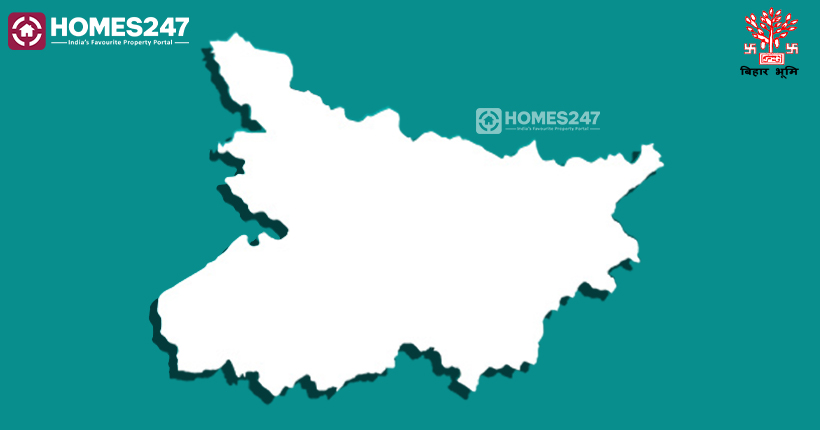
.jpg)


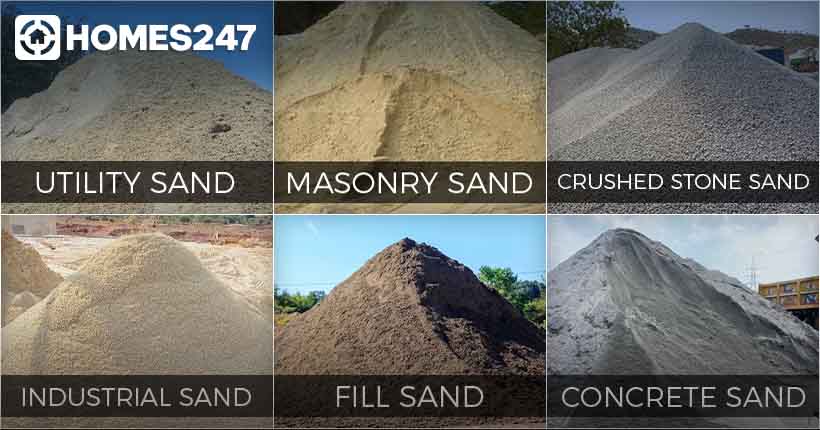




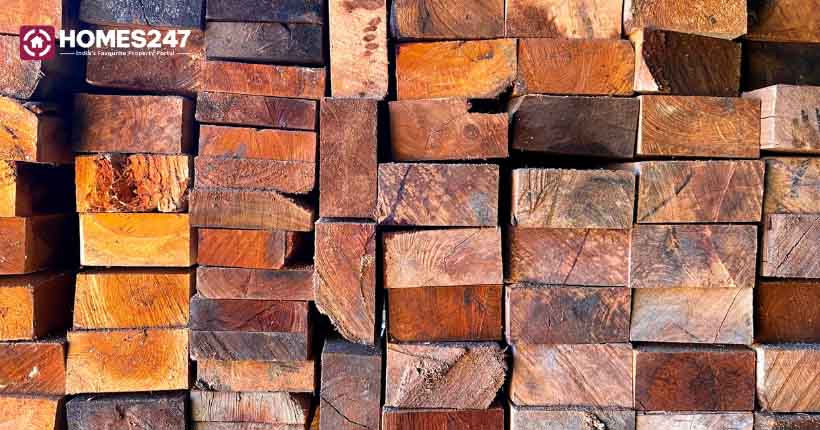


.avif)


.avif)


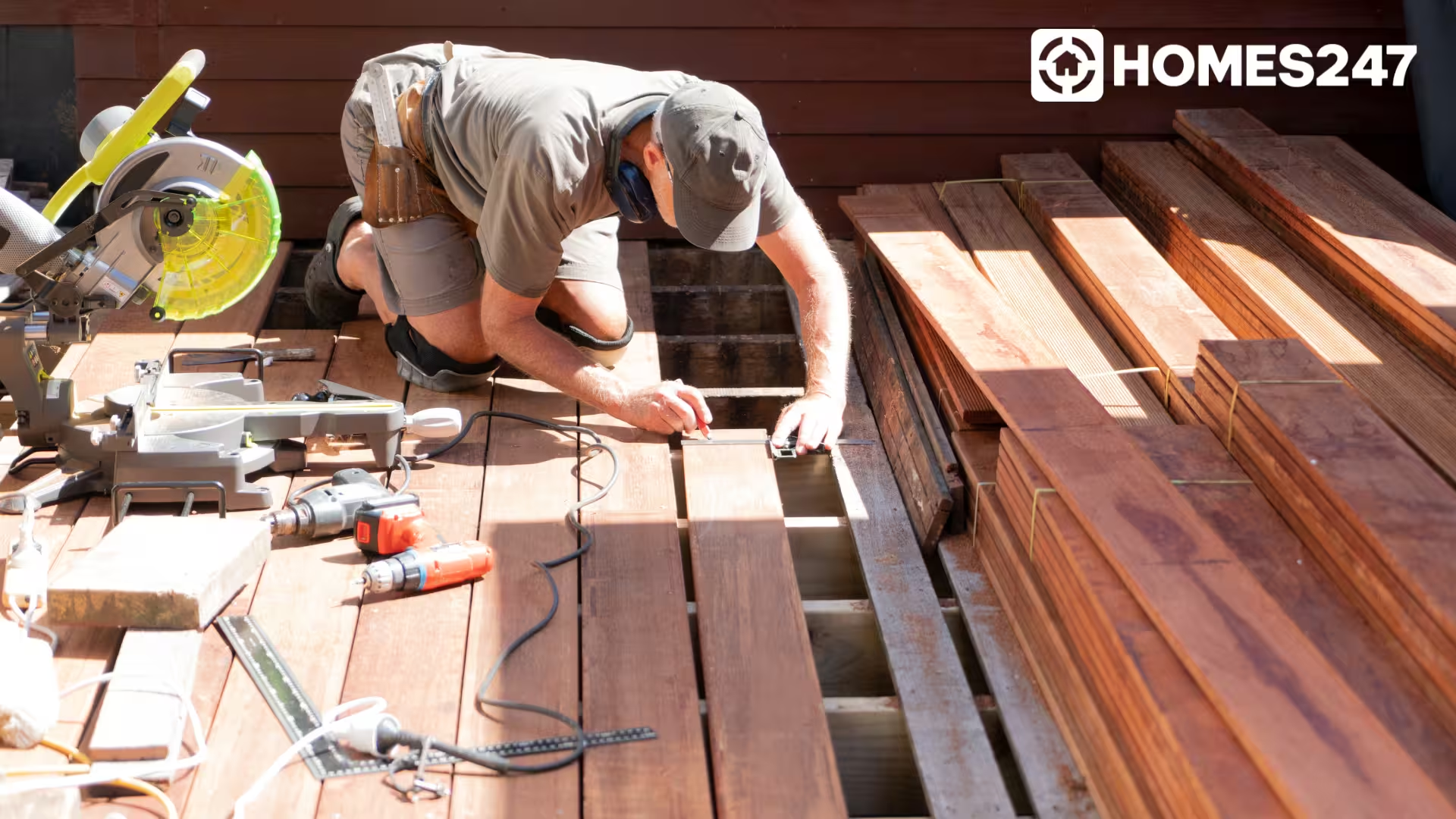

.jpeg)





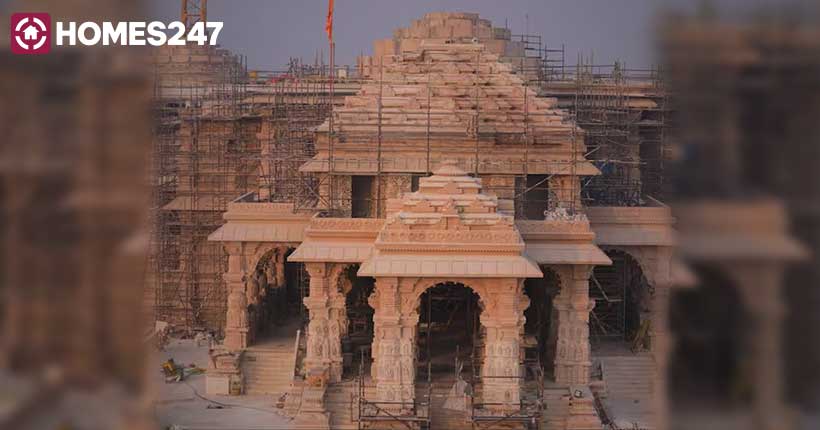








 (1).avif)
